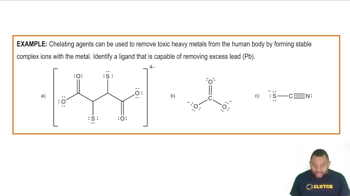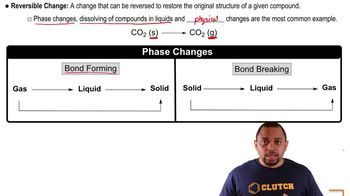A KNO3 solution containing 35 g of KNO3 per 100.0 g of water is cooled from 40°C to 0°C. What happens during cooling? (Use Figure 14.11.)
Scuba divers breathing air at increased pressure can suffer from oxygen toxicity—too much oxygen in their bloodstream— when the partial pressure of oxygen exceeds about 1.4 atm. What happens to the amount of oxygen in a diver's bloodstream when he or she breathes oxygen at elevated pressures? How can this be reversed?
 Verified step by step guidance
Verified step by step guidance
Verified Solution
Key Concepts
Partial Pressure

Oxygen Toxicity

Reversal of Oxygen Toxicity

A KNO3 solution containing 35 g of KNO3 per 100.0 g of water is cooled from 40 °C to 0 °C. What happens during cooling? (Use Figure 14.11.)
A KCl solution containing 38 g of KCl per 100.0 g of water is cooled from 60 °C to 0 °C. What happens during cooling? (Use Figure 14.11.)
An aqueous NaCl solution is made using 102 g of NaCl diluted to a total solution volume of 1.00 L. Calculate the molarity of the solution. (Assume a density of 1.08 g>mL for the solution.)
An aqueous NaCl solution is made using 102 g of NaCl diluted to a total solution volume of 1.00 L. Calculate the molality of the solution. (Assume a density of 1.08 g>mL for the solution.)
An aqueous NaCl solution is made using 102 g of NaCl diluted to a total solution volume of 1.00 L. Calculate the mass percent of the solution. (Assume a density of 1.08 g>mL for the solution.)
